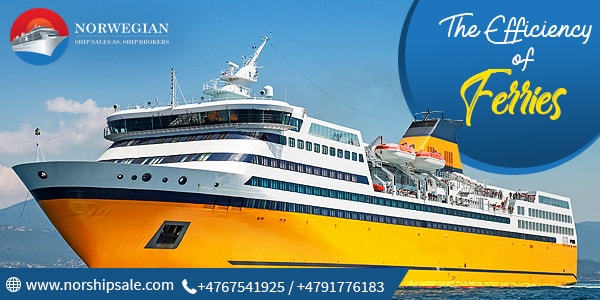With the world being rapidly taken over by the might of mammoth cruise vessels, it is unfortunate that the ferries have been relegated to mostly carrying cargo. Ferries are smaller boats that have been in operation for decades, used to move from one place to another. These in fact have still remained in the operation in towns that are on the banks of rivers. Serving as an ideal option to cross the water body that do not have an overbridge, ferries are considered very popular in these areas.
Ferries are mostly run on diesel but attempts are constantly made to minimise the use of diesel in favour of an alternative that is cleaner, cost efficient and environmentally safe. Although ferries do not contribute to the water and air pollution as much as larger ships do, they do have their fair share of faults that can be worked on. From making significant changes to the design of the ships, implementing proper waste management to adapting to energy efficient fuels, the shipping industry is leaving no stones unturned to keeping the vessels on the right track and not leave behind a trail of pollutants in their wake. The fast ferries for sale along with Day and Night Ferries that are being launched have been all been implementing these changes to not only serve the passengers better but to also pay heed to the growing concerns in the environment.
Liquefied Natural Gas (LPG) and other electrical alternatives are replacing the natural fuels and each ferry that is being designed in recent times is being customised to the fit the needs of the ships as well as the location they would be setting sail on. Following is an overview of a few of the ferries and their distinct features for potential investors to choose from:
Hovercrafts
Created during the 1950s, the hovercrafts made use of blowers to blow out air below the hull of the ships. This leads to a difference in air pressure leading to the lifting of the ships above the surface of the water. The ferries however, require high maintenance.
Cruise Ferries
Cruise ferries are technically smaller in size and are essentially a combination of luxurious cruise vessels and Ro-pax ferries. These cruise vessels are used during vacations and host a plethora of activities on board that includes entertainment sectors and a number of restaurants. The ferries do not just cater to the vacationing individuals but also offer transportation facilities.
Cable Ferries
These ferries are greatly reducing in number due to the traditional methods that they still employ. The cruise ferries are propelled through wires that are connected to the shores on either sides. Known as floating bridges and chain ferries, these small ships used steel chains as propellers when they were first introduced into the industry.
Roll On And Roll Off Ferries
The roll on and roll off ferries are so called because of the ramps that are in-built into the ships. These ramps that are attached to the entry and exitways make the unloading and reloading of heavy cargo easier. These ships are an improvement on the ones that used to be built specifically to hold cargo and even then subjected the valuable items to damage. The new and advanced roll on and roll off ferries takes care of such concerns making transportation a breeze.
Enlist the services of Norwegian Ship Sales AS, one of the premiere ship brokers in the Norwegian circuit and have a look at their extensive inventory, charting the progression of the ships and fast ferries in the area.


